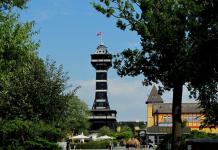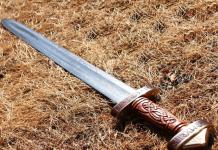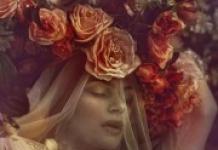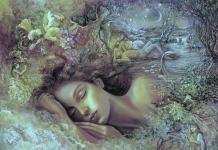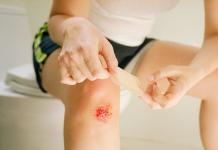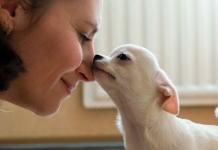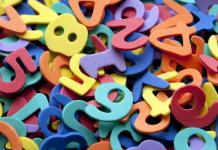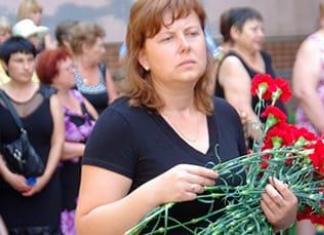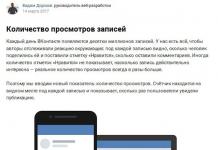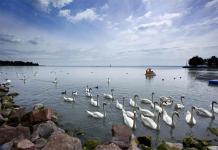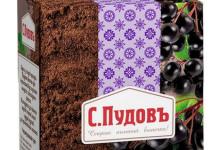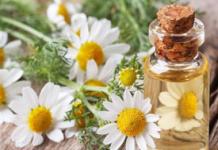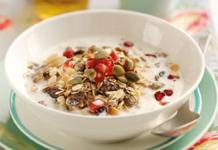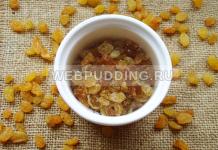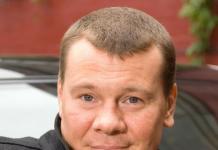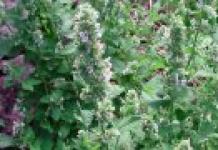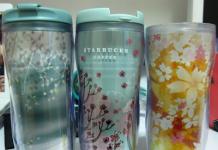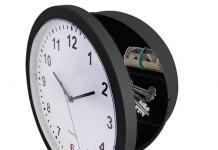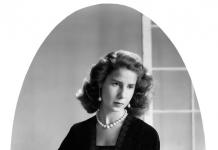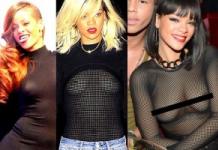Cognitive and emotional development. Clarify children's knowledge about the emotions of joy, anger, fear.
Learn to recognize them and convey them with the help of gestures, facial expressions. Give an idea of how and when these emotions are manifested. Develop imagination.
Speech development. To teach to understand the lexical meaning of the word "rainbow", to speak poetic texts with the transfer of emotional mood, expressiveness of movements, and the like.
Artistic and aesthetic development. To convey with the help of gestures the character of the depicted hero (bear, fox).
Creative development. In theatrical activities, be able to play the plot in accordance with the content of the tale, convey the character of the hero, depending on the situation and one's own vision. In the drawing, convey an emotional mood with the help of facial expressions.
Socio-moral development. To give an understanding that external features and words do not always correspond to the intentions of a certain person and to be careful in dealing with strangers.
Physical development. Encourage children to actively express their thoughts in various exercises and studies. Develop fine motor skills of the hand while drawing with fingers.
Material: screen, according to children's height; dolls on spoons; toy bear; contour images of animal faces (Wolf, Chanterelle, Squirrel, Bunny, Cockerel), gouache paints, wet wipes.
The course of the lesson in the 2nd junior group of kindergarten
Educator. - Children, look out the window, what is it looking at us? (Sun)
- Children, what about the sun? (warm, affectionate, gentle, yellow, dazzling, bright, shiny, pleasant, hot ...)
Are we happy with the sun?
And when else do we rejoice, to whom or what are we glad?
(gifts, flowers, good friends, warm wind, mom, dad, etc. various pleasant surprises, miracles)
- Now I will read you a poem about various miracles, which is called “Joy” (according to K. Chukovsky)
(when reading a poem, the teacher puts illustrations on the flannelograph)
Happy, happy, happy
White birches.
And on them with joy
Hair grows.
Happy, happy, happy
Dark donkeys.
And on them with joy
Oranges are growing.
it's not rain coming from the cloud
And not hail
So rained down from the cloud
Grape.
So come with me quickly
To green meadows
There's a rainbow across the river
Connected the coast.
We'll climb the rainbow
And play in the clouds.
Let's go down the rainbow
We are skiing and sledding!
Why are kids happy? (they have fun because miracles happen around and they ride on the rainbow)
- What do you think, is the word "rainbow" cheerful or sad?
- Children, the rainbow in the sky is colorful, beautiful, when we see it, we rejoice, we have fun. Apparently that's why it's called RAINBOW, because everyone has fun and joy from it.
— Oh, and who is sitting here and growling? (bear)
Emotion exercise
The Bear got so angry, (angry look)
Started to roar loudly: (furrowed brows)
- My bed broke, (lower lip protrudes)
And my book broke, (shakes head)
What should I do? (shakes her hands)
- Do not roar, do not get angry, bear, ("stroke" the bear)
Glue your book, (facial muscles relaxed)
Let's fix your bed. (kind look, affectionate smile)
You don't jump on the bed
Feel free to read the book.
“Now guess, Little Bear, who is coming to us?”
Psychological study on the expressiveness of movements
Chanterelle walked along the path,
And she carried mushrooms in a basket:
5 mushrooms, 5 chanterelles,
For chanterelles, for sisters. Huh!
(slow gait, torso tilted to the right - towards the "heavy" basket, the right hand "squeezes" the basket. On the last words, they "put" the basket on the floor, wipe their forehead with the back of their hand).
- Children, in what fairy tales is the Chanterelle found? ("Gingerbread Man", "Teremok", "Koza-Dereza", "Straw Goby", "Cat and Cockerel", etc.)
Educator. - Children, do you like to play theater?
- Let's see a fairy tale with the participation of Chanterelles.
Theatrical performance with children(puppeteers - children)
Host (educator): The audience is gathering, the fairy tale begins. Listen and watch the fairy tale "About the Cockerel, the Hen and the Sly Fox"
Leading: Once upon a time there was a Cockerel and a Hen. They got tired of sitting at home, and they went to travel the world.
Here they go in a green grove, the breeze shakes the bushes around, and fresh leaves turn green on the bushes, and berries between them
Here is the Hen and says:
Chicken Child: - Cockerel, break my twig,
Where the leaves are thicker, where there are more berries!
Leading: Only the Cockerel wanted to break it, and from under the bush the Bunny from his house:
Bunny Child: - Who walks around my grove here, who breaks my bushes?
Leading: Cockerel got scared:
Chicken Child: - Cockerel, break a twig for me, where the leaves are thicker, where there are more nuts!
Leading: Only the Cockerel wanted to break it, and from under the bush Squirrel from his house:
Squirrel Child: - Who walks around my grove here, who breaks my bushes?
Leading: Cockerel got scared:
Hen Child: - Cockerel, break me a twig, where the leaves are thicker, where there are more apples!
Leading: The Cockerel dared, began to break, and here is the Chanterelle from his house:
Chanterelle Child: - Come, dear, to visit me. Here, rest in my hut - I have gifts for you!
Leading: Cockerel and Hen were very happy:
Hen and Cockerel (together): - Oh, what good and cute animals are here!
Leading: And the cunning fox thinks to herself: “This will be a good dinner for me!”
And she ran rather to the Wolf-neighbor to invite him to dinner.
And the Cockerel and the Hen ate well and rested and became so cheerful that the Cockerel even began to sing.
It was here that the Bunny ran past the house. And the Bunny was actually very good, and says:
Bunny Child: - Run faster from this house, Chanterelle wants to eat you all!
Leading: But the Cockerel and Hen do not believe him.
Hen and Cockerel (together): - There are such good animals here!
Host: Then Squirrel saw them through the window:
Squirrel Child: - Run faster from this house, Chanterelle wants to eat you all!
Leading: Here the Cockerel looked out into the yard, and in the yard - chicken feathers.
Cockerel Child: - Oh, oh, we really need to run fast!
Leading: And already the Fox goes to the house, and the Wolf behind her, terrible and predatory, goes and rejoices that they will have dinner.
As soon as they stood on the threshold, and the Hen with the cockerel jumped into the window. And go home soon! But we barely made it!
And the Wolf and the Fox ran and ran - and did not find a trace under the bushes. And they didn't have lunch!
Discussion.
Educator. - Did you like the story?
- Whom did the Cockerel and the Hen meet first? (Bunny)
- And who is the last one? (Lisu)
- Name all the characters who participated in the play.
Which one do you think was good?
- And who was cunning and predatory / evil?
- And what were the Cockerel and the Hen? (shy)
- Show how afraid the Cockerel and the Hen were?
Visual activity of children
Educator. - Let's draw different faces: good, evil and frightened, whoever wants what. (children stand at the tables)
Finger gymnastics.
- Let's do exercises for fingers: (imitation of movements according to the text)
The rooster and the hen walked,
They carried a handful of grains,
They collected grains in the beak,
Then they pecked a little.
The rest were carried to the mill,
Then the pies were baked.
All the children were fed
Bird crumbs pecked.
Finger painting: (children are given the contours of the muzzles of animals, and they must depict their characters - cheerful, angry, frightened)
Outcome. Reflection.
What was the name of the show we watched?
- Is it possible to go to strangers in the house?
“Thank you kids, you did a great job today.
Synopsis of an integrated lesson in the second junior group on the development of speech through the development of fine motor skills of the hands on the topic "Spring Awakening". Purpose: To acquaint children with A. Pleshcheev's poem "Spring", to teach clearly and correctly to pronounce the isolated sound f. Program tasks: Educational: - to acquaint children with A. Pleshcheev's poem "Spring"; - to systematize children's knowledge about spring; - to consolidate children's knowledge about the life of wild animals in the spring; - to learn to understand the meaning of the riddle and find an answer; - expand the vocabulary of adjectives; - Exercise in the coordination of words in a sentence. Developing: - to develop the skills of free communication with adults and children; - develop the ability to use accumulated knowledge in a conversation; - to form emotional responsiveness; - develop logical thinking; - to develop observation, attention, creative abilities of children; - develop fine motor skills of children. Educational: - to cultivate love and respect for all living things; - develop a love for literature. Integrated educational areas: 1. Cognitive development Objectives: continue to introduce the signs of spring. 2. Artistic and aesthetic development. Tasks: to teach how to create an image of the sun with fingers on semolina. To acquaint with the work of P. I. Tchaikovsky “The Seasons. March» 3. Physical development. Objectives: to promote the preservation and strengthening of children's health. 4. Socio - communicative development Tasks: to continue to teach coherently answer the questions of the educator. Types of activity: - Game - Cognitive - Musical - Visual Methods: Verbal - answers to questions. Visual - viewing. Game - games. Pictorial - drawing. Equipment: doll - Spring, toy Cockerel, audio recording P.I. Tchaikovsky Seasons. March, plates with semolina, Su-Jok balls for each child. Preliminary work: talking with children about spring, observing spring changes in nature on a walk, reading poems about spring, memorizing poems, solving riddles, looking at pictures and illustrations.
150.000₽ prize fund 11 documents of honor Evidence of publication in the media
Synopsis of an open lesson in the second junior group "Visiting Grandma"
Tasks:educational: To teach children to combine the same (in color, size) objects into subject sets according to a verbal assignment. Continue to learn to distinguish and name geometric shapes: circle, square. Answer the question "how much?" "with a lot of words, not a single one. To consolidate the ability to establish a relationship between concepts: big, small. Work with children on various techniques and activities for the development of fine motor skills of hands.
Continue to teach children to have a dialogue with the teacher: listen and understand the question asked and answer it clearly. Exercise in the ability to distinguish and name familiar geometric shapes: circle, square. To form the ability to distinguish and name the primary colors: red, blue, yellow, green. Use in the work on the development of fine motor skills non-traditional drawing techniques (finger drawing on semolina).
developing: develop logical thinking, memory, attention, fine motor skills of hands. To develop tactile sensitivity of complexly coordinated movements of the fingers and hands in games with household items (clothespins, cereals).
educators: to cultivate a culture of behavior, goodwill, love for animals, the ability to work together and amicably.
Integration of educational areas:
Communication
Socialization
Cognition (FEMP)
Cognition (FTsKM)
Dictionary activation:
Geometric shapes (circle, square).
Material for the lesson:
An easel on which the sun is drawn, balls (red, yellow, green, red), boxes (red, yellow, green, red), a ball hoop, a river, pebbles large round and small round, square large and square small, soft toy - a bunny, a rooster, a chicken, a Christmas tree, a house, clothespins, peas, beans, plates, semolina, chickens cut out of paper of different colors without tails, treats.
Lesson progress
The teacher leads the children into a group to the musicEducator: Children, look who came to us?
Children: Sun
Educator: Let's say hello to the sun.
Children: Hello Sunshine!
Educator: and look how many guests we have, let's say hello to them too, say hello.
Children greet guests.
Educator: Children, and the sun did not come so easily, it covenant us on the road, but first it will give us a task. See what's in my hand?
Children: Ball
Teacher: What color is the ball?
Children: blue
Educator: there are a lot of multi-colored balls in the hoop, and here there are hoops of different colors (red, yellow, blue, green). It is necessary to arrange the balls according to the color of the hoop. Can we break it down?
Children: Yes
Educator: Getting Started
Task number 1 "Spread the balls by color"
Educator: were there balloons in the hoop?
Children: Were
Educator: How many were there?
Children: A lot of
Educator: And now there are balls?
Children: no balls
Educator: Let's look at the correct arrangement of the balls by color.
What color hoop? green like grass and green balls, blue like the sea and blue balls, red like a tomato and red balls, yellow like the sun and yellow balls.
Educator: we have completed this task. Let's move on.
We approached the river.
Educator: Children, what is it?
Children: river
Educator: There is no bridge here, but how can we get across? Look at the pebbles. Round big pebbles and round small ones, square big ones and square small ones. And we need to choose large round pebbles.
Task number 2 "Collect a bridge from large round pebbles"
Educator: Here is the bridge. Has everyone collected the big round pebbles?
Children: Yes
Educator: Look at the bridge they built. We walked.
We need to cross the bridge guys, we will get into the distant forest, there are friends of the hare.
Fall into the forest
Educator: Who is there?
Children: Bunny
Bunny: I am a bunny
Educator: Why are you sad?
Bunny: I'm lost
Educator: where do you live?
Bunny: By Grandma
Educator: Oh bunny, we're also going to grandma's, don't worry, we'll see you off.
The teacher looks behind the tree, and there sits a bunny toy
Educator: and who is this, small, sad and crying? What happened to him?
Bunny: This is a bunny, his mistress abandoned him.
Educator: The hostess abandoned the bunny, and we know the poem. Let's tell. The teacher together with the children recite the poem.
Task number 3 "A poem about a bunny"
The hostess abandoned the bunny
Bunny stayed in the rain
I couldn't get off the bench.
Wet to the skin.
Educator: don't cry bunny, don't cry, we'll take you to your grandmother too. Let's stroke. So that our bunnies are not sad, let's play with them.
Music game
Educator: Well done! the bunnies had fun, and now let's move on, it's time for us to go, oh guys, what is this?
Children: House
Rooster peeking out of the house
Educator: Who is it?
Children: Cockerel
Educator: Let's hear what the cockerel has to say.
Rooster: I live in the yard, I sing at dawn, I have a comb on my head, I am a vociferous cockerel.
Ku-ka-re-ku!
Educator: Children, what color is the cockerel's comb?
Children: red
Educator: what color is the tail?
Children: green
Educator: Petya-cockerel, and we also know a poem about you
Task number 4 The poem "Peter the cockerel"
petya cockerel
golden scallop
Olive head
silk beard
What do you get up early
You sing loudly
Do you let the kids sleep?
Educator: Here is a good poem. The rooster has a family. Let's see. Who is it?
Children: chicken
Educator: Something sad chicken? What happened?
Hen:"Ko ko ko". She came to the chicken coop, climbed in, pinched the tails of all the chickens. "Ko ko ko". Woe.
Educator: Oh don't worry. Children, let's help. Look how many chickens are here, but they don't have tails. Let's make ponytails, only we select ponytails for each chicken by color.
Task number 5 "Ponytails for chickens from clothespins"
Educator: Who did? Show chicken. Well done! What color is the hen? (red, yellow, blue, green)
Educator: Children, chickens need to be fed. Hens are very fond of peas, but we have everything mixed up with beans here. Let's separate the beans from the peas.
Task number 6 "To sort out the beans from the peas"
Educator: The chickens will be happy. Well done, children! Let's give one plate of peas to the chickens to eat, and the chickens will come for the rest of the plates.
Educator: bunny, but you don’t see anything, what does it look like?
Bunny: To my grandmother's house
caregiver: Children, we came to the grandmother's house, let's go and see.
Grandma comes out of the house
Grandmother: Hello guys!
Educator: Hello grandma!
Grandmother: Thank you for finding me, my bunny. And who helped you? Did someone help you find your way to my house?
Educator: Grandma, we will not tell you, we will show you.
Task number 7 "Draw the sun from semolina"
Grandmother: What are you drawing, what does it look like? Circle, rays, what is it? This is the sun! It helped you find your way.
Educator: That's right grandma. This is the sun
Grandmother: Bunny, let's say thank you to the sun, which helped the guys find their way to our house.
Educator: Grandma, and we came to visit you, find out how your health is, how are you?
Grandmother: Everything is fine, but I was not worried about the bunny, but you found it for me. Well done! Thank you! They showed me the way, led me. And I have prepared a meal for you.
Grandmother distributes treats to children
Educator: Thank you grandma! Our journey is over, it's time for us to go to the garden. Goodbye, grandma! Goodbye!
With mathematics as a subject, children begin to get acquainted in the kindergarten, namely, the child at this moment is 3-4 years old. Educators are working on the formation of elementary ideas in children. And the further development of the child depends on how well the first perception of the forms of objects and their quantitative relations is mastered.
Any lesson allows a child to learn something new in kindergarten. The second younger group is ideal for this. Mathematics makes it possible to compare familiar objects in length, height, width. The teacher introduces such spatial concepts as "front", "behind", "above", "below", "left", "right". The teacher also teaches the children to correctly identify and use time intervals in speech, for example, morning, afternoon, night.
Help for a budding teacher
In order to properly organize and conduct mathematics classes in the 2nd junior group, a novice teacher needs to remember the following points:
- initial classes during the month should be held with separate groups of 6-8 people;
- a month later, classes begin to be conducted in full with the entire group;
- in the classroom, children should have didactic in the required quantity for each child;
- when getting acquainted with new material, the duration of the lesson should not exceed 10-12 minutes, and when working out familiar material - 15 minutes;
- in the classroom, you need to monitor the fatigue of children, and if they are tired, all educational activities stop immediately.
The main goal and objectives of classes in mathematics
The main goal of a mathematics lesson for children aged 3-4 is to get acquainted with the basic concepts: number, shape and characteristics of an object.

To achieve this goal, it is necessary to solve a number of tasks:
- teach the child to correctly distinguish the color and shape of the object;
- form the initial concept of a number (one, many);
- teach children the relationship of objects through one sign that generalizes them (collect all the red objects);
- form the concept of the characteristics of the object (long, shorter, large, small).

In order to properly cope with the solution of problems and achieve the goal, the teacher in the classroom in mathematics in the younger group must use various techniques and teaching methods.
Techniques and teaching methods
Classes in mathematics in the 2nd junior group should be visual and effective. Children learn any new knowledge through direct perception, that is, when they follow all the actions of the educator and repeat the same actions themselves with handout didactic material. The teacher-educator needs to qualitatively think over each lesson, all new concepts that characterize the subject, first the teacher himself speaks several times during the lesson and only then asks the children to repeat.

In addition, we must not forget that this age of learning everything new is based on emotional perception. And if you do not interest the baby from the first minutes of the lesson, then it will be wasted. To do this, children's math classes most often begin with surprise moments:
- appearance of a toy
- unexpected guests
- secret chest.

The teacher-educator needs to keep the attention of the children throughout the lesson. To do this, the method of changing activities is used. The subjects with which the child will work must already be familiar to him, otherwise he will first study them as he needs, and will miss all the material offered by the teacher.
The structure of the math class
In kindergarten, as in any other educational institution, all classes must be structured, despite their short duration.

Mathematics classes in the 2nd junior group should include the following points:
- (duration 1-2 minutes).
- The assignment of the tasks of the lesson (1 minute) is as follows: “Let's help the bear (Katya doll) find a circle (find out which path is longer)”.
- The main part of the lesson (learning new material).
- Reflection (duration - 1 minute). Children should definitely talk about what they learned today.
- Finish the lesson in a positive mood. It is necessary to praise the children: "Thank you, guys, for helping the bear (Katya doll) to find a circle so quickly. He (she) will definitely come to visit you again."
Methodological literature - an assistant in conducting classes
Do you have the youngest group 2 in your upbringing? Math is not hard to do.
Each teacher, in order to correctly compose a lesson, needs methodological literature. Now there are a lot of them. The most popular books are:
- "Classes in kindergarten" I.A. Ponomareva, V.A. Pozina.
- "My mathematics" E.V. Solovyov.
- "Maths. The second junior group "E.S. Maklakov.
- Mathematics in Kindergarten. The second junior group "L.V. Minkevich.
How to help a child in failure?
Not every child succeeds at once, so the teacher needs to be able to be loyal to the failures of the child and help him during the lesson. In kindergarten, mathematics serves as the basis for the further perception of educational material at school. And on how firmly and correctly the initial concepts are laid down in a preschool child, his further success in educational activities will depend.
Everyone knows that mathematics is an exact and complex science, therefore mathematics classes in the 2nd junior group should contain thoughtful, specific, correctly formulated questions, taking into account the mental development of children, that the child can answer.
If the material presented in the process of long-term development is still difficult for the child to reach, you can enlist the help of his parents by correctly asking them to work with him at home in their free time on the problem that arises.
Talk to the parents about the possibility of bringing the child to kindergarten half an hour earlier or picking up a little later. Thus, the teacher has the opportunity to work out additionally covered material with children who do not succeed or who missed classes during illness.
Basic rules for successful math classes in the second junior group
- Remember that for a child, all new information is a complex process of learning about the world.
- Each child is a small personality with its own character, mental and physical development.
- The teacher leads the lesson. Give children the opportunity to explore a new object or its characteristic (smooth, rough), but do not delay this process, because the baby may get tired. Promise the children to let them play with the object after class.
- Keep all the promises you make to your children.
- Praise your children as often as possible.
- If the material is difficult, give it a few lessons to better work it out.
- Don't procrastinate on class time.
Outcome
Ideal if you need to conduct a lesson, the second younger group. Mathematics is something that the guys will not be able to do without in the future. The kids are getting ready for school. The teacher should build the lesson in such a way that the children are really interested.
Gordeeva Liliya Leonidovna
Educator of preschool children, Preschool department No. 2, GBOU School No. 1101, Moscow
Gordeeva L.L. Open lesson in the second junior group "Journey to the Zoo" // Owl. 2018. N2(12)..03.2020).
Order No. 89280
|
Tasks |
|
|
Educational: |
to introduce the inhabitants of the zoo, their features, habits to activate the speech of children. |
|
Developing: |
develop thinking, imagination, coherent speech, auditory perception and attention. Continue learning to change singular nouns to plural nouns. |
|
Educators: |
Cultivate respect for animals. |
|
Demo material: |
Sparrow toy, audio song "Bus", subject pictures of an elephant, horse, monkey, bear, giraffe and crocodile. Illustrations for S. Marshak's poem "Where did the sparrow dine?", Crocodile toy. |
|
Handout: |
Object pictures cut into 4 parts depicting an elephant, a horse, a monkey, a bear, a giraffe, a crocodile and other animals living in the zoo. |
|
Organizing time: |
I gladly meet the children, exchange mutual greetings. We greet guests. |
Lesson progress
Surprise moment:
Go to the window and quietly knock on the glass. Exclaim joyfully.
Educator. Guys! Look who's knocking on our window! (Pick up the toy sparrow hidden behind the curtain in advance.) Who are these guys? That's right, sparrow. How does a sparrow chirp? Chick-chirp-chirp-chirp. Say hello to the sparrow.
Everyone greets the sparrow.
Educator. Where did you come to us from?
Sparrow. Yak flew to you from the zoo. I live very well there, there is a lot of food.
Educator. And who lives in the zoo?
Sparrow. There are many different animals there. Do you want me to take you to the zoo and introduce you to its inhabitants?
The children happily agree.
Educator. What is a zoo? Big house for different animals. We will go to the zoo on the "Bus". The audio recording of "Bus" sounds. So we arrived at the zoo.
And the first one we saw was a huge elephant.
(I show the children a subject picture of an elephant). Then, in order, I show pictures with the rest of the animals.
Elephant lives in the zoo
We'll sink like him. Children follow you loudly
We saw horses stomp their feet in place.
And they clattered their hooves. They follow you high
The monkeys are jumping lifting your knees.
They scurry through the trees. bouncing in place and
running around the room.
Bear, bear, clubfoot, They walk, waddling from foot to foot
You are naughty here, shaggy, leg.
Proudly raising his head
A giraffe stands by the bush. Raise your arms above your head.
Here is a toothy crocodile Two hands depict the mouth of a crocodile
He opened his mouth wide
Ouch , guys, while we were doing exercises, the wind came up, and all the pictures of animals mixed up.
Let's go to the table and collect pictures of animals.
Didactic game "Fold the picture"
Exercises in compiling a whole subject from four parts, expanding vocabulary.
In front of the children, subject pictures cut in half depicting an elephant, a horse, a monkey, a bear, a giraffe, a crocodile, a lion and other animals. Children are divided into two groups. Each child takes half of the animal from the table and tries to find the other halves of the animal. Sparrow helps children, comments on their actions. Collected pictures are laid out on the table. What animals did we collect? Let's name them?
Sparrow invites the children to sit on chairs and listen to a story that once happened to him. He tells S. Marshak's poem "Where did the sparrow dine?" and shows illustrations for each episode.
caregiver
Where did you dine, sparrow? (Children name animals)
In the zoo with animals.
I ate first
Behind the bars at the lion.
Fed up with a fox.
I drank some water from the walrus.
Ate a carrot from an elephant.
I ate millet with a crane.
Stayed with a rhinoceros
Bran ate a little.
I've been to a feast
Tailed kangaroos.
Was at a dinner party
At the furry bear.
A toothy crocodile
Nearly swallowed me.
Relay "Pass the Sparrow"
Raises the mood, brings up a sense of responsibility. At the same moment, a toy crocodile appears, a rubber toy. Crocodile.
Where is the sparrow? I want to catch it and eat it.
Quickly hug the sparrow to you. But, the crocodile is still getting close to him. Children sit on chairs, I give one of the children a sparrow. The child needs to pass it in a circle, and the crocodile will catch up with him, opening his mouth to eat.
Sparrow says thank you guys and flies away.
Educator. Guys, I have a miracle bag for you, a miracle animals hid there. I take out the elephant from the bag.
Elephants live in Africa
And their noses are long
Like rubber hoses
Here is such a size. (Child says).
Guys, is the elephant a big animal, or a small one? (Big).
What is the name of an elephant's long nose? (Trunk).
But the tusks, what do you think the elephant needs them for? (They use tusks to protect themselves from enemies - these are such horns).
What are the ears of an elephant? - huge, the elephant waves them like a fan, so that it is not hot.
Do elephants love water? - Yes, very much, if there is a river or lake nearby, they will definitely go for a swim.
What does an elephant eat? Tree branches and grass.
A monkey.
Monkey in the air
So comfortable on the tail
Swing along the branches -
Get to the fruit.
And who among you knows what they like to eat (children's answers: bananas).
What color are bananas? (children's answers: yellow).
Where do bananas grow? (children's answers: high on a tree).
Educator: Right. The tree on which bananas grow is called a palm tree. (Repeat the word with the children. The teacher shows an illustration of a palm tree).
Bear.
Clumsy and big
He sleeps in a den in winter.
Loves cones, loves honey,
Well, who will call?
(children's answers).
Educator: That's right - it's bears.
How do bears growl?
What do bears like to eat? (children's answers).
Educator: That's right, well done. Guys, the bear is tired of sitting in a cage. He wants to play with you the game "The cubs lived in the thicket."
Bear cubs lived in more often
They turned their heads.
Like this, like this - they twisted their head (We turn our heads to the right and left)
Bear cubs looking for honey
Friendly tree rocked
Like this, like this - they shook the tree together (tilts of the torso to the right and left)
And waddle around
And they drank water from the river
Like this, like this, they drank water from the river (Bending forward)
And they danced too! Together they raised their paws!
Like this, like this, they raised their paws up! (Raise hands alternately)
Here's a swamp on the way! How can we pass it?
Jump and jump! Jump and jump! Have fun buddy! (Jumping up)
Giraffe.
Easy to recognize a giraffe
It's easy to find out:
He is tall
And sees far. (Child reads).
Teacher: Who is it guys? (children's answers).
That's right, it's giraffes. The giraffe can eat the leaves of trees that others cannot reach. Why do you think? (Answers of children). The giraffe is taller than all other animals. The coat of a giraffe is spotted - covered with spots. Giraffes live in herds divided into two groups: in one mother with cubs, in another father.
Physical education "At the giraffes"
Follow the steps with the children as the poem progresses.
Giraffes got spots, spots, spots, clapping all over
Spots everywhere. body with palms.
Giraffes have spots, spots, spots,
Spots everywhere.
On the forehead, on the ears, on the neck, on the elbows, Both indicate the noses, on the stomachs, on the knees and socks, with the body fingers touch the corresponding parts of the body.
Now we are going to play a game I will show one animal, and you will say when there are a lot of them and what they are called.
One elephant, when there are many of them, it is elephants.
And what are they doing (going).
There is only one horse, and when there are many of them, it is horses.
Zebra is alone, and when there are many of them, what do they do? Are standing.
Who is in this picture? Giraffe, and when there are a lot of them - giraffes.
Who is in this picture? A bear, and when there are a lot of them, it's bears.
There is only one crocodile, and when there are many of them, what do they do? They lie.
Final part
Guys, our trip to the zoo is over. Teacher: where did we go today? What animals have you seen? What animal do you like and why?
Did we have fun?
Have you played with animals?
Eating, dancing
And not much tired.
And now kids
It's time for us to join the group.
The monkey treats the children with bananas.


